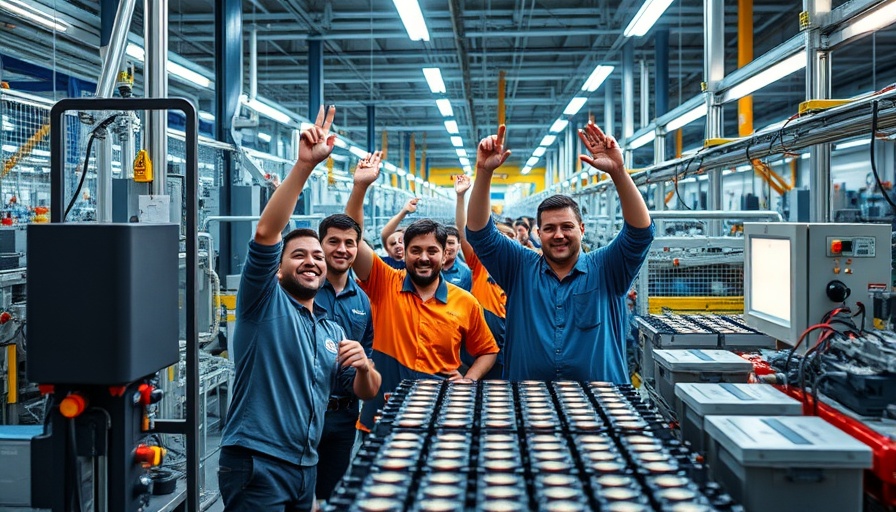
UAW Declares Victory in the Face of Uncertainty
The United Auto Workers (UAW) union has made waves with a recent declaration that it has achieved a significant win with claims of a new electric vehicle (EV) battery plant in Ohio. As the automotive industry undergoes major transformations towards electrification, this achievement may pave the way for job security and advanced manufacturing within the region. However, the outcome remains clouded by uncertainties surrounding implementation and operational efficacy.
What This Means for Workers and the Future of Electric Vehicles
This new plant is viewed as a critical step towards the UAW's goal of maximizing production and protecting workers' rights amidst a rapidly evolving tech landscape. The significance of this development cannot be overlooked—it represents not just an investment in manufacturing jobs but also in the future of battery production which is crucial for the expansion of EVs. With current trends indicating a push for cleaner technology, the implications are enormous for both workers and consumers alike.
Technological Innovations Driving Change in the Auto Industry
In an era where innovations are redefining traditional sectors, the automotive industry stands out as a leader in integrating emerging technologies. These advancements go beyond just electrification; they include automated processes in manufacturing and logistics that are set to disrupt traditional practices. By investing in new tech, the UAW is aligning itself with the transformative trends anticipated to flourish by 2025, including AI, robotics, and more sustainable manufacturing approaches.
Partnerships: The Key to Future Success
Strategic partnerships between the UAW, manufacturers, and tech companies are essential for cultivating a sustainable future in the automotive sector. As the economy adjusts to these changes, collaboration on projects that emphasize technology implementation will become vital. This includes sharing knowledge on technology advancements, which not only supports workers but also enhances the overall efficiency of production lines.
Community Impact and Economic Benefits
The establishment of the battery plant in Ohio presents a unique opportunity for local communities. Job creation in high-tech manufacturing offers a pathway to economic resilience, crucial for regions that have been historically tied to the traditional auto industry. By harnessing the power of new technology, local economies can see a boost, giving power back to the communities that have long been the backbone of American automotive manufacturing.
Possible Challenges Ahead
While the prospect of new jobs and advanced technology looks promising, challenges loom on the horizon. Issues such as workforce training for advanced manufacturing technologies, potential resistance from traditionalists within the industry, and economic uncertainties could hinder progress. To truly capitalize on this opportunity, the UAW and stakeholders must address these challenges head-on, ensuring that workers are equipped to thrive in a tech-driven environment.
The Road Ahead: Together Towards Innovation
The UAW claims of a victory in securing the battery plant highlights a crucial moment for not only the union but for the future of technology in the manufacturing industry. As it forges ahead, the UAW must navigate the complexities of this transition while staying committed to its workers. Embracing change and fostering an adaptive workforce will be key strategies as the automotive industry aligns with technological advancements and prepares for a sustainable future.
 Add Row
Add Row  Add
Add 




Write A Comment